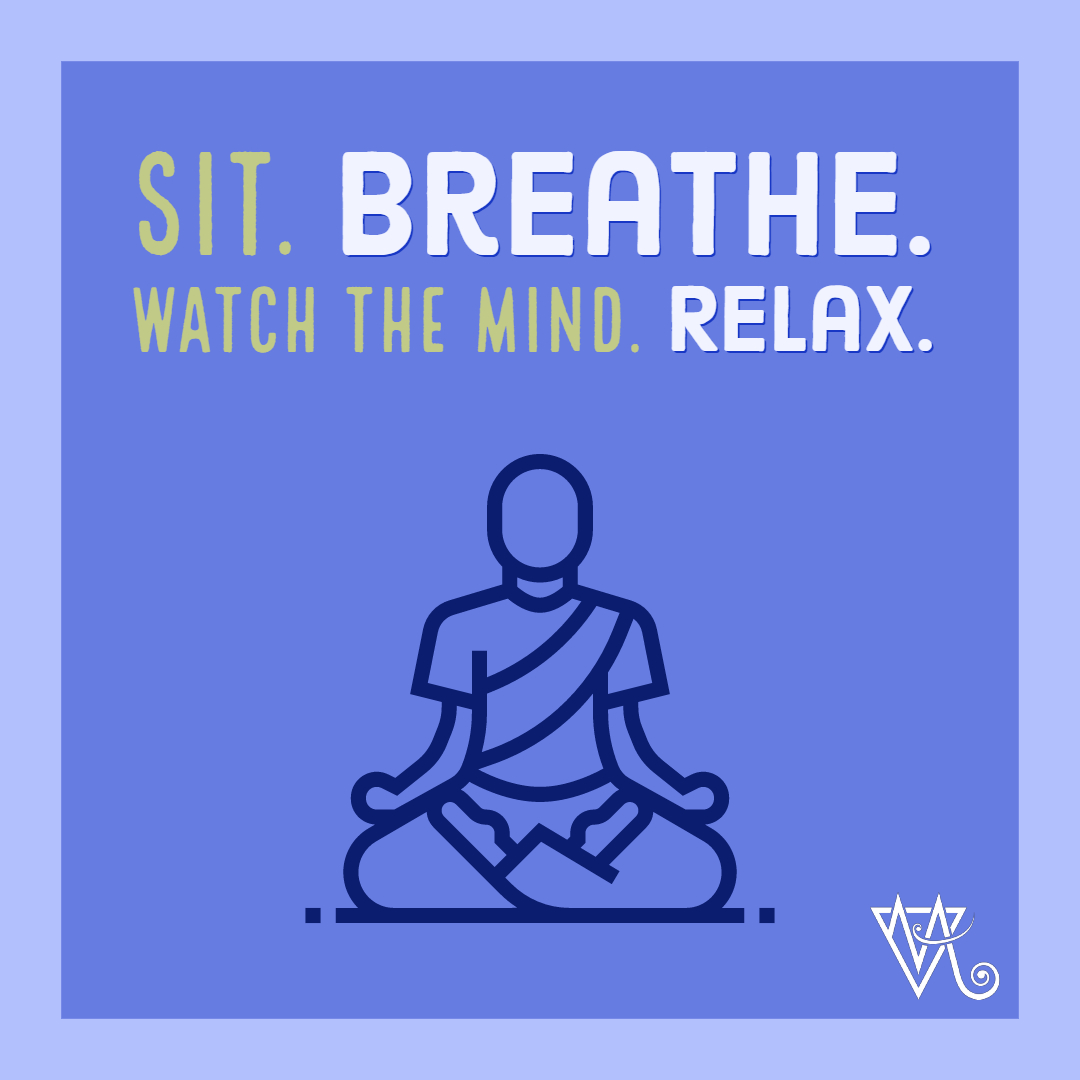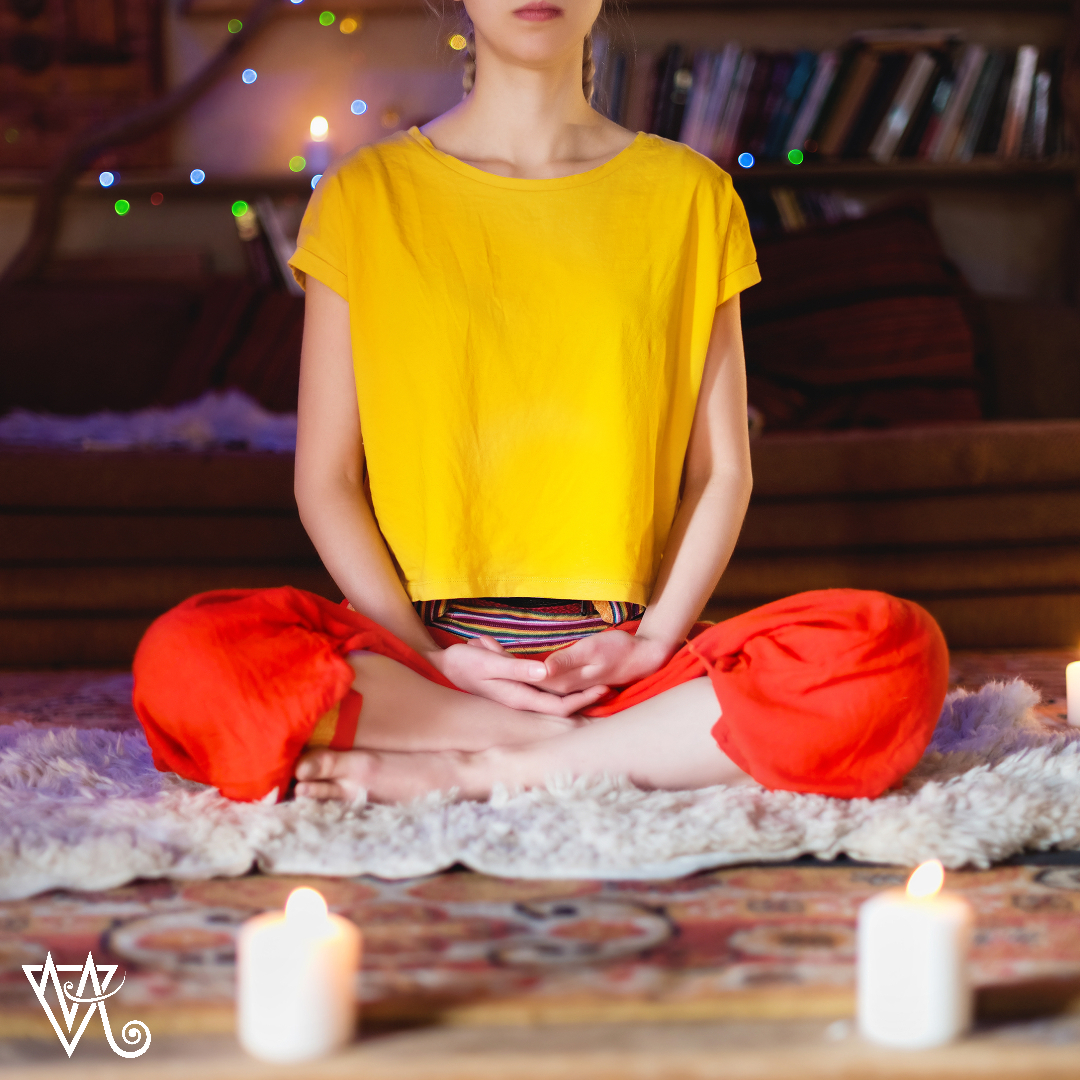The 12 Myths Of Meditation
- Mindy Arbuckle SOULutions Coaching

If you are like most people you’ve heard about the benefits of meditation and have thought about trying it. But, for some reason you haven’t been able to make a consistent practice out of it. I was there when I first started meditating. You are not alone. There are many myths about meditation that can keep your mind from fully immersing into this healthy practice for the mind and body. Let's look at several and learn ways of getting through those barriers.
1. That its hard.
I think the largest roadblock our minds create is that meditation is HARD. That is a bunch of hooey. The thing that is hard about meditation is that you are actually consciously watching your mind and how crazy it is. It feels utterly restless, even more so than regular daily living. That is because when you are moving through life, your mind is moving with you as well. When you still the body, the mind wants to keep going at the same pace. It can feel like a wave catching up to you and pummeling you with how much is there.
Patience. If you let the wave move through, the water (the mind) will settle as well. It will still move. But now it is like watching a stream of thoughts flowing by, not a tidal wave.
2. Your mind has to be still.
That brings us to the next myth, that the mind must be still for you to be successful in meditation. Wrong. We are letting it settle. Not forcing it to be still. The mind’s job is to think. It is really good at its job! Why fight it? Let the mind move and think, just don’t get wrapped up in the thoughts that come and go. If you do the mind is so fast that you can be sitting in your home meditating one moment, thinking about what you want to eat for dinner, remembering the last overseas trip you had and the food you ate there and then to the beautiful sunset you saw there. In a flash you are around the world if you let your mind think too much when you get involved in the stories it creates.
3. That you CAN’T do it.
Why not? Is the mind the problem? The body? What gets in your way of doing something so good for yourself? I find that just sitting down for the practice is about 80% of the practice. There are so many things that can distract our minds -- all the apps you have access to on your phone, surfing the web, work, dishes, dirty toilets (yes, sometimes even cleaning the toilets seems better to your mind than sitting down to meditate!). When you sit down for your practice, imagine that you are putting a seat belt on and buckle yourself in for the amount of time you are committed to. Just do it.
4. I don’t know how.
Lots of people tell me that they don’t know how to meditate. Hogwash. Their minds are doing a very good job of coming up with excuses not to meditate. Meditation is so simple:
Sit. Breathe. Watch the mind. Relax.
That pretty much sums it up. The practice of meditation is simply placing the mind’s focus and concentration on one thing. When people are praying the rosary they are meditating. When you sit and breathe deep breaths for 5 minutes, you are meditating. When you are sitting under an amazing tree in nature and taking it all in you are meditating.
5. You have to follow someone ELSEs guidelines.
There are a lot of people out there telling you that they can teach you how to meditate and that their system is the best way to meditate. That may be true to a degree. But the myth of this is that you actually don’t have to follow anyone else’s methods of meditation. You certainly can. Lots of systems of meditation are out there and they each have their own benefits. But, if you can’t afford the classes or don’t seem to connect with the methodology, it’s ok. You are ok. You can meditate in any number of ways.
6. I don’t have good posture or I can’t sit on the floor.
Do you ever feel like it is hard to sit on the floor like the “yogis” do and you just don’t feel comfortable there? Perhaps it just hurts to to sit cross legged on the floor. Your hips and low back are pissed of in that pose. Well, don’t do that pose. Or do it in a different way. If you sit on the floor and the hips and low back are cranky, elevate the hips onto a cushion or a yoga block. The crest of the pelvis is ideally higher than the level of the knees when sitting cross legged. If that still doesn’t work, you could try kneeling, with or without support under the hips. Using a meditation bench is super comfy and lets the spine be tall easily. And if none of that works for you sit at the edge of a firm chair. (We aren’t sinking back into a recliner for mediation.) On a chair you want the feet flat, knees at a 90 degree angle and the spine lifted.
Really, the most important thing is that the spine is as lifted as it can be. The pelvis is neutral, neither tilting forward nor back. The rib cage is centered over the pelvis. The shoulders roll back and down to open the collar bones. And the head draws backward so the head is now aligned with the rest of the spine. When the spine is aligned in this way it moves our bodies into the natural alignment it was designed for. Thus, allowing us to use less energy to hold the body upright while meditating. However, let me warn you that at first your back muscles will likely protest a bit because they aren’t used to having “good posture” any more and will fatigue easily. Keep working at it and your posture will improve over time.
7. I’m too fidgety.
Once you find your comfortable posture on the floor, with or without support or on a chair, sometimes you feel like your body is just unwilling to sit still. Fidgeting is a method that the body uses to keep the mind distracted from itself. Yet, often fidgeting is an unconscious action. So, to make peace with it first start to just notice when your body is moving unconsciously. Notice the fidgeting. Breathe into it. Acknowledge it. And with an exhale invite the body to relax and find rest. You do not have to wrangle the body with force in order to be still. Invite it instead and you will be creating a healthy relationship between you and your body. When fidgeting is a habit, you will likely have to do this process of noticing, acknowledging and breathing to release it many times. That is ok. Each time you consciously observe the unconscious movement, you are creating the opportunity to rewrite a new, more supportive pattern within your body/mind system.
8. The mind is like the wind, how do you control it?
 This is a classic statement that is so relatable. What do you do with a mind that seems to be uncontrollable?
This is a classic statement that is so relatable. What do you do with a mind that seems to be uncontrollable?
Watch it. That’s it.
Start watching the mind so you become more familiar with its movements. Get to know your mind through observation. It is your mind. You are the only one that can do something with it. No matter how many times someone tells you that your mind is calm and peaceful, it doesn’t make it calm and peaceful. You are the one that gets to work with it.
Notice the words “work with it.” If you try too hard to control the mind it will resist and put up a fight! It’s like the harder you try to force a three year old to eat their cauliflower the more they dig their heels in and refuse. Be gentle with your mind and yourself and you will see much more progress. Let go of having to be perfect and forcing the mind into submission. Let the mind wander and think and you just watch what happens.
Remember, don’t get caught up in the stories of the mind and indulge it. Watch it like you watch the passing clouds. When that wonderful dragon you see in the clouds changes to a mountain and then disappears altogether you aren’t angry with the clouds for changing. You watch with lightness in your heart and let go of what is impermanent -- and all those thoughts are impermanent.
9. I’m not religious or it is against my religion.
This myth has two sides to its proverbial coin. Some folks see meditation as a religious practice while others who have religion in their lives think that it is somehow against their religion. Both are inaccurate in my opinion.
Watching the activity of the mind and getting to know yourself from the inside out is good for everyone and doesn’t hold a particular dogma. Some schools of meditation can certainly add a religious bent to their practices but that doesn’t mean that all meditation includes a deity, God, or a particular belief system.
Remember that meditation is bringing the mind’s attention and focus to one thing -- the breath, a mantra or prayer, your heart center, watching the thoughts like a stream flowing by, etc. There doesn’t have to be religion in the practice. Anyone bringing mindfulness into their lives will see and feel the benefits of slowing down and letting go of stress.
10. Meditation is boring.
Really? When I watch my mind it is like the “Never Ending Story”. I am continually fascinated by what my mind can come up with when I give it the space to just be.
Let’s get real though. Some people really do find meditation boring. If you fit this myth, then give yourself something to focus on. What are you called to? Chakras (energy centers), the light of love that lives in your chest, the river of thoughts, your breath? Choose one thing to focus on for a given period of time (3-5 minutes is the minimum for meditation, 10-20 minutes is even better.) Sit in your comfortable seat and start focusing your mind on your chosen concept. When the mind wanders off, bring it back to your point of focus. Do this again and again to train the mind to focus. Likely you will have to bring your focus back dozens of times in a matter of 3-5 minutes, possibly more. Don’t get discouraged. Just keep bringing the mind back again and again with love and kindness. It's fun to watch how many times it will drift and how tricky it can be as it moves you away from your focal point. Sometimes you might have been fooled by the mind and not even realize that you’ve wandered!
11. I don’t want to be alone with my mind
I can relate to this myth. When I first started meditating I realized that there was a really angry, violent and very pissed off part of me that lived in my mind. I remember sitting down for one of my first group meditations and some awful part of me was so violently mad. She told me how bad I was at meditating and how I wasn’t good at it. She was screaming her head off because I wasn’t perfect at this practice.
That really surprised me. I’m a very kind, loving and generous person and to feel and experience that rage inside me didn’t make sense at the time.
We all have parts of us that we’ve repressed. Feelings that we didn’t want to deal with when they were happening. Experiences that were so hard that all we could do at the time was to survive them. The shadow aspect of ourselves holds a large portion of our power. When the shadow remains hidden and not dealt with, that power shows up in inappropriate ways like an unexpected outburst at a person on the other end of a cable internet helpline or a waitress that got your order mixed up.
When we can observe our inner workings of the mind it will likely bring up shadow aspects that you would prefer not to look at. Look at them you must. What ever is there, you have survived it already. If it is coming up then you are strong enough and it is the right time for your to see it for what it is and clear it. When we clear these shadow parts of ourselves up, we do a couple of really good things for ourselves.
- We are able to see our whole self and offer it love. You don’t need to ignore or repress anything within you. You are capable of setting yourself free.
- When you can see and love all of you, you are more capable of seeing and loving others more clearly. Seeing others more clearly offers you more clarity on your relationships.
- You increase your sense of self worth and value. You are whole and wonderful. The people around you know this. But because you are hiding parts of yourself you tend to let that hold you back. You don’t have to do that anymore. You don’t have to tell anyone your deepest darkest secrets. By acknowledging them yourself, you set that stuck energy free and you are more aligned with your highest self.
12. I don’t have time to meditate
There is a wonderful Zen saying that goes something like this:
“You should sit in meditation for 20 minutes a day. Unless you're too busy, then you should sit for an hour.”
 Everyone of us needs time each day for self care and reflection. What this adage is saying is that we are worth taking care of ourselves. If you feel like you don’t have even 20 minutes a day to sit, be with yourself and ride the waves of your own mind then you probably aren’t taking very good care of yourself. So, you should take extra time to care for yourself!
Everyone of us needs time each day for self care and reflection. What this adage is saying is that we are worth taking care of ourselves. If you feel like you don’t have even 20 minutes a day to sit, be with yourself and ride the waves of your own mind then you probably aren’t taking very good care of yourself. So, you should take extra time to care for yourself!
I know this sounds crazy. An hour a day for just meditating?! When will you eat, workout, spend time with friends and family, get groceries? Even if you don’t have an hour or 20 minutes I know you can find 5. If you find 5 minutes a day a few times each day -- upon waking, breathing mindfully while commuting to work, taking 5 minutes away from your computer to rest your eyes, after the kids are in bed, turn off the TV before a show ends, when you are lying in bed at night -- all these times add up to a lot. So start with 5. And then 5 more and 5 more. Pretty soon your mind and body will crave the self care time that you take throughout the day. You are worthy of a few minutes of peace and quiet every day!
With great respect and love,
Mindy